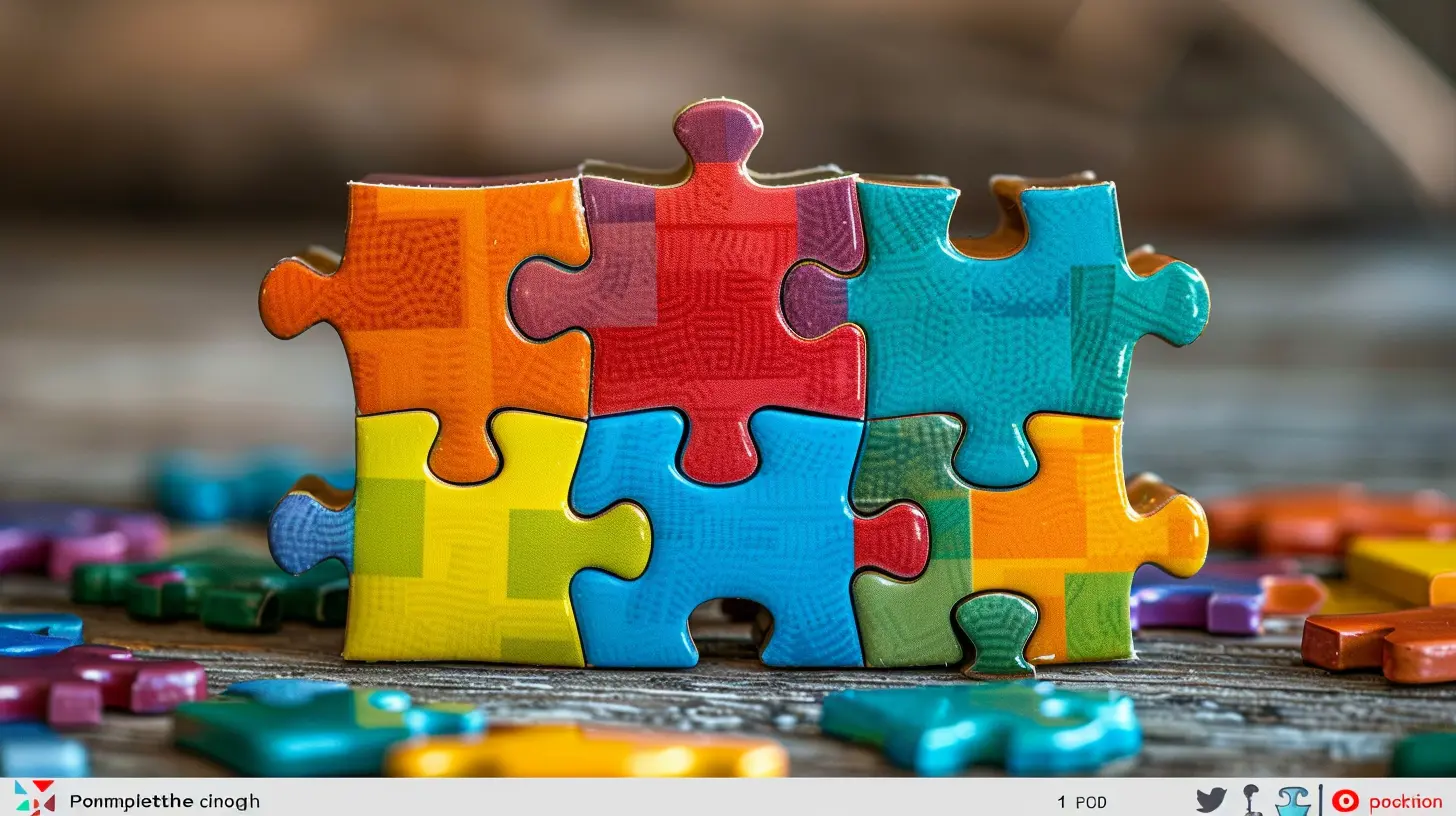The Importance of Flexibility in the Problem-Solving Process
22 June 2025
Let’s face it—solving problems is a part of life. Whether you're a student tackling a tricky algebra equation, a teacher planning classroom activities, or a professional trying to meet deadlines, problems are like pop quizzes—you don’t always see them coming. What separates the people who crumble from the ones who conquer? It’s not always intelligence or experience. It’s flexibility.
Yeah, that’s right. Flexibility isn't just for yoga classes and gymnasts. It’s the secret sauce behind effective, real-world problem-solving. So let’s dive deep into why being adaptable isn’t just helpful—it’s absolutely essential if you want to crush challenges like a pro.
What Does Flexibility Really Mean in Problem-Solving?
Before we go all-in, let's get on the same page. Flexibility in problem-solving is the ability to shift strategies, perspectives, and solutions depending on the situation. It’s not being wishy-washy—nope—it’s being strategic. Think of it as mental agility: the power to pivot without losing momentum.Imagine you’ve planned a road trip. You’ve mapped out your entire route, booked hotels, and even curated the perfect playlist. But then—bam!—a bridge is closed. Now, you could stubbornly wait until it’s fixed (good luck with that), or you could find an alternate route and keep moving. That alternate route? That’s flexibility in action.
Why the Rigid Route Just Doesn’t Work
Let’s be brutally honest. Being rigid in your thinking? That’s a fast track to failure.Ever tried forcing a puzzle piece into the wrong spot because you were convinced it had to go there? That’s what inflexible problem-solving looks like. You waste time, energy, and often feel totally stuck. The world isn't black-and-white, and most problems aren’t either. They’re messy, unpredictable, and full of surprise twists.
If you always rely on the “one-size-fits-all” approach, you’ll be blindsided when it doesn’t work. Flexibility is what bridges the gap between what you expected and what actually happens. And in today’s fast-paced world, being adaptable isn’t just nice—it’s non-negotiable.
The Brain Science Behind Adaptability
Now, let’s geek out for a second. Neuroscience actually backs this up. Our brains have this amazing feature called neuroplasticity—the ability to rewire and adapt based on new experiences. Flexible thinkers are basically taking full advantage of this superpower.Instead of going down the same mental path over and over again, they build new ones. It’s like turning your brain into a GPS that’s always recalculating the best route, even when you hit traffic. That’s not magic—it’s science. And the more you practice it, the better you get at it.
Real-World Examples That Prove Flexibility Works
Let’s get real for a sec and look at how flexibility has changed the game in actual scenarios:1. In the Classroom
Teachers who adapt their teaching methods to fit different learning styles see better student engagement. A rigid lecture-only approach might leave visual or hands-on learners behind. But switching things up? That unlocks understanding.2. In Business
When the COVID-19 pandemic hit, entire industries had to pivot. Businesses that adapted to remote work thrived. Restaurants offering online orders and curbside pickup survived while others closed their doors. Flexibility wasn’t optional—it was survival.3. In Technology
Ever wonder why companies like Apple and Google dominate? They’re always innovating. If their first idea flops, they iterate and improve. They don’t cling to failures—they learn, adapt, and evolve.The 5 Pillars of Flexible Problem-Solving
Alright, enough fluff. Let’s break down what makes someone a truly flexible problem-solver. These five traits are what you need to level up:🔁 1. Open-Mindedness
You’ve got to ditch the “my way or the highway” mindset. Be open to different viewpoints, new methods, and even weird ideas. Sometimes the most out-there suggestions turn out to be gold.🔍 2. Curiosity
Flexible thinkers are naturally curious. They ask questions like “What if we tried this instead?” or “Why does this keep happening?” They’re not afraid to poke holes in existing methods and ask, “Can we do better?”⏩ 3. Willingness to Change Direction
If things aren’t working, change it up. It’s that simple. Pivoting isn’t a sign of weakness—it’s smart. Double down on what’s effective, and dump what’s not.🧠 4. Emotional Agility
Stress fries your brain. Plain and simple. If you crumble under pressure, flexibility goes out the window. Emotionally agile folks manage their reactions so they can think clearly, even when things get spicy.🤝 5. Collaboration
Sometimes, the best way to solve a problem is not to solve it alone. Input from others introduces new angles you might never have considered. Flexibility often comes from seeing through someone else’s eyes.Common Roadblocks to Flexibility (And How to Smash Through Them)
Not everyone is born adaptable. Some folks find it hard to let go of control or try new things. That’s okay—but it's not an excuse. Let’s talk about the biggest blockers and how to blow right past them.🚧 Fear of Failure
Trying new methods means some will flop. That’s fine! Every “failure” is really just a data point. The faster you fail, the sooner you learn what works.🚧 Perfectionism
Striving for perfect kills flexibility. You get paralyzed trying to make the “right” choice. Instead, aim for progress, not perfection.🚧 Over-Attachment to Old Ways
“If it ain’t broke, don’t fix it,” right? Nope. Just because something worked before doesn’t mean it will always work. If you’re not evolving, you’re falling behind.How to Cultivate Flexibility Like a Boss
Look, flexibility is a skill—and skills can be trained. If you’re not naturally adaptable, don’t stress. Here’s how you can build that muscle:1. Challenge Your Assumptions
Every problem comes with hidden assumptions. Start asking yourself, “Am I missing something here?” or “Why do I believe this has to be done this way?”2. Practice Perspective Shifting
Try solving the problem as if you were someone else—a teacher, a CEO, a toddler even. This can unearth ideas you wouldn’t think of in your usual mindset.3. Reflect on Your Failures
After a problem is solved (or not), do a quick post-game review. What worked? What didn’t? How could you have adjusted sooner?4. Try New Approaches—Even When It’s Uncomfortable
Get out of your comfort zone. Take the scenic route once in a while. Flexibility grows when you practice making tiny adjustments in daily life.5. Surround Yourself With Diverse Thinkers
Diversity isn’t just a buzzword. It pushes you to see things differently and rethink outdated assumptions. Stay open, and let others challenge you.Why Students (and Educators) Must Learn This Early
If you’re in school, now’s the time to master flexibility. Think about it like a mental Swiss Army knife. Sure, you might be acing your math exams today, but what happens when college, jobs, or real-life curveballs hit?Rigid thinking won’t cut it in a world that changes daily. Employers crave adaptable minds. Life demands it. So don’t just memorize formulas—learn how to adjust the lens when the picture changes.
And if you're an educator? Teach flexibility explicitly. Celebrate creative problem-solving, reward effort over outcome, and normalize mistakes as part of the process. You’ll raise resilient, resourceful learners who don’t break when challenges hit—they bend.
The Bottom Line: Flexibility Isn’t Optional—It’s Essential
Problem-solving is less about having all the right answers and more about knowing how to navigate unknowns. You can’t Google your way out of every challenge. Life’s not a multiple-choice test. It’s an ever-evolving puzzle.Flexibility gives you the edge. It keeps you agile, creative, and emotionally steady when things don’t go according to plan (which, let’s be real, is most of the time).
So the next time you're stuck trying to solve something—pause. Breathe. Pivot. Ask a new question. Try a wacky idea. Talk to someone else. Be brave enough to loosen the grip on your original plan.
Because if you stay flexible, you’ll never be stuck for long.
all images in this post were generated using AI tools
Category:
Problem SolvingAuthor:

Anita Harmon
Discussion
rate this article
2 comments
Marley Larsen
Flexibility in problem-solving is crucial; it not only fosters creativity but also allows individuals to adapt to unforeseen challenges. Embracing diverse approaches enhances collaboration and leads to more effective and innovative solutions in complex situations.
November 8, 2025 at 11:23 AM

Anita Harmon
Thank you for your insight! I completely agree—flexibility is key to fostering creativity and collaboration, ultimately leading to more innovative solutions in complex problem-solving.
Kenneth McKenzie
Great insights! Flexibility truly enhances problem-solving, fostering creativity and adaptability. Embracing change leads to innovative solutions—thanks for sharing this invaluable perspective!
July 5, 2025 at 11:43 AM

Anita Harmon
Thank you! I’m glad you found the insights valuable. Flexibility is indeed key to unlocking creativity in problem-solving.


